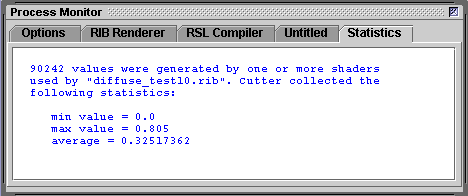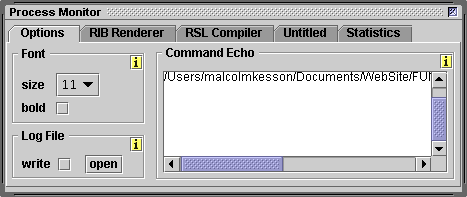Introduction
This tutorial provides code that demonstrates how values calculated in a displacement shader can be accessed by a surface shader - both shaders must be assigned to the same surface. For example, figure 1 shows the effect of a surface shader that querries the displacement values in order to assign white to the peaks of the bumps.

Figure 1
The Pixar documentment that deals with this topic is,
Shader and Message Passing Functions

